Initial Configuration


The gaseous disk obeys a polytropic equation of state, $P=K\rho^\Gamma_0$, at $t=0$. It is evolved according to the ideal gas law $P=(\Gamma-1)\rho_0\epsilon$, where P is the pressure, K is the polytropic gas constant, ε is the internal specific energy, Γ is the adiabatic index, and ρ0 the rest-mass density. We chose Γ = 4/3, appropriate for radiation pressure-dominated, thermal disks, which are typically optically thick. The initial disk satisfies the density profile of a disk that would be in equilibrium about a single black hole with the same mass as the binary.
We seed the initial disk with a small, purely poloidal B-field. Note that the goal of our work is to assess how the final relaxed state of the disk depends on the binary mass ratio. The initial data, which governs the early evolution, has no physical significance.
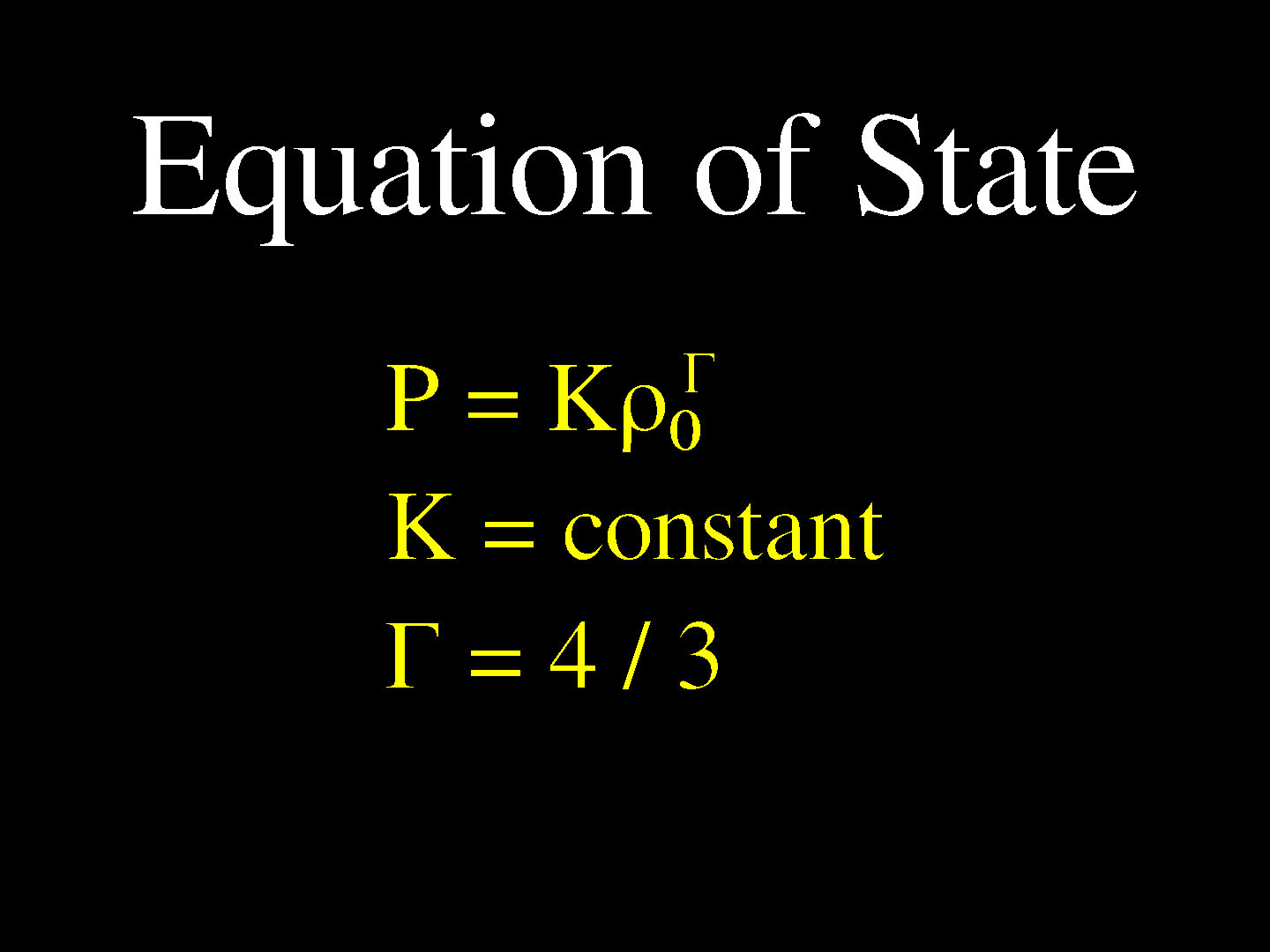 |
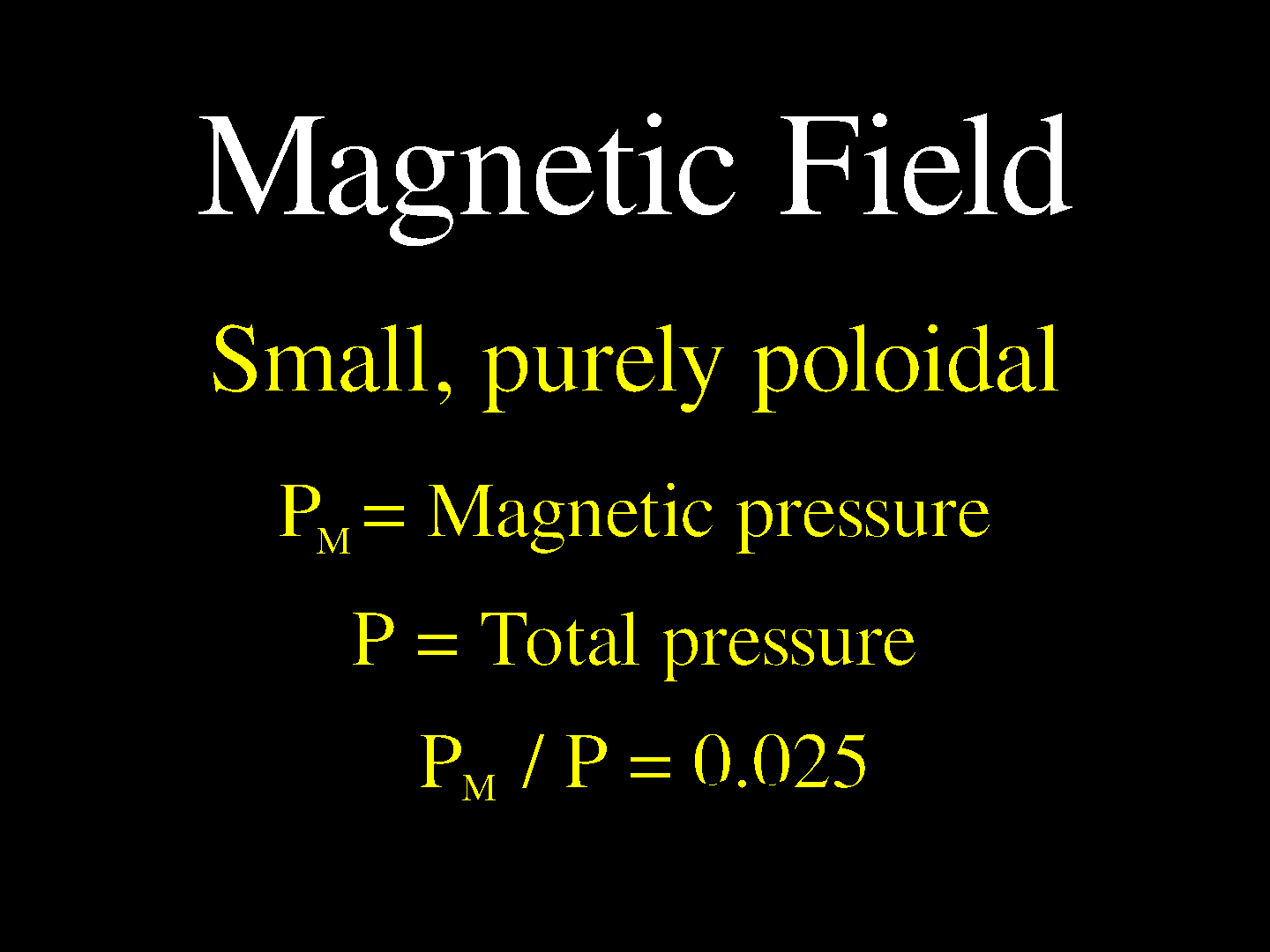 |
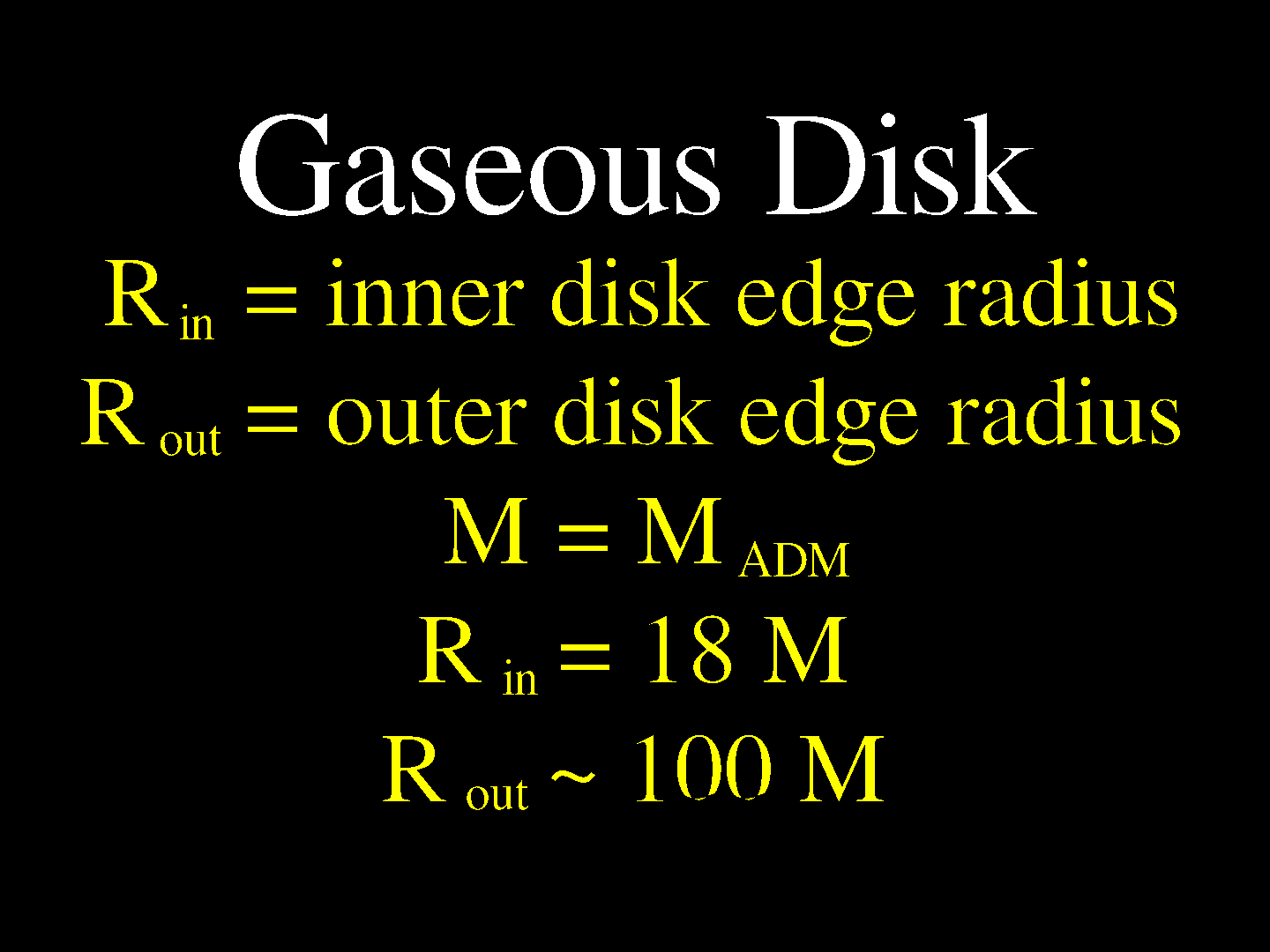 |
The initial binary is in a quasiequilibrium circular orbit, and has a frequency of MΩ ~ 0.028. The matter and gravitational field variables are determined by using the conformal-thin-sandwich (CTS) formalism. BH equilibrium boundary conditions are imposed on the BH horizon. The mass ratio of the binary varies from 1:1 to 1:10.
The metric evolution is treated under the approximation that the inspiral time scale due to GW emission is long compared to both the binary orbital period and the viscous time scale of the disk ("pre-decoupling epoch"). Hence, we can neglect the inspiral for multiple binary orbits. The CTS initial data we adopt possess a helical Killing vector, which implies that the gravitational fields are stationary in a frame corotating with the binary. As a result, we can perform the metric evolution in the center-of-mass frame of the binary by simply rotating the initial gravitational fields. This technique simplifies our computations substantially.
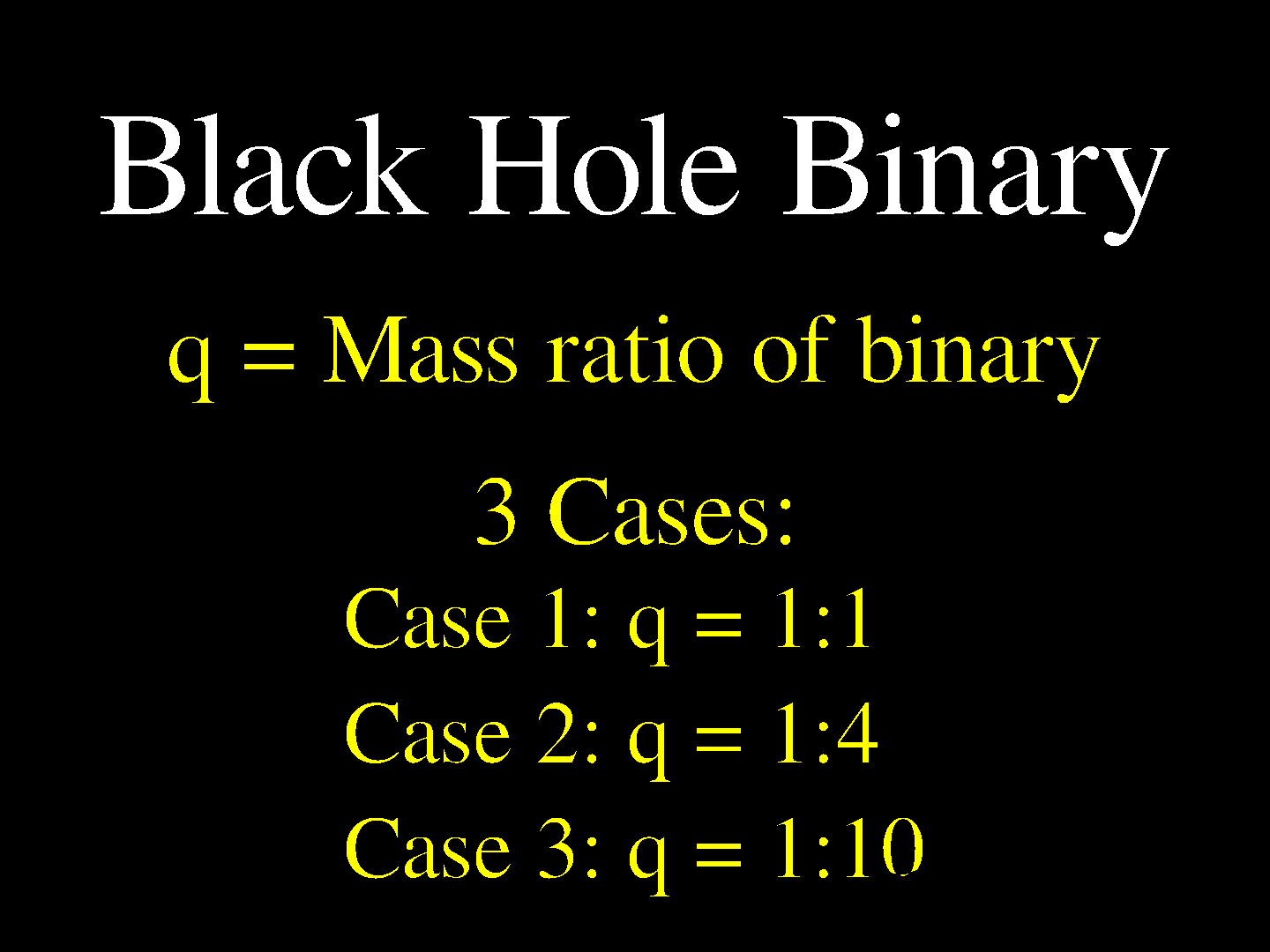 |
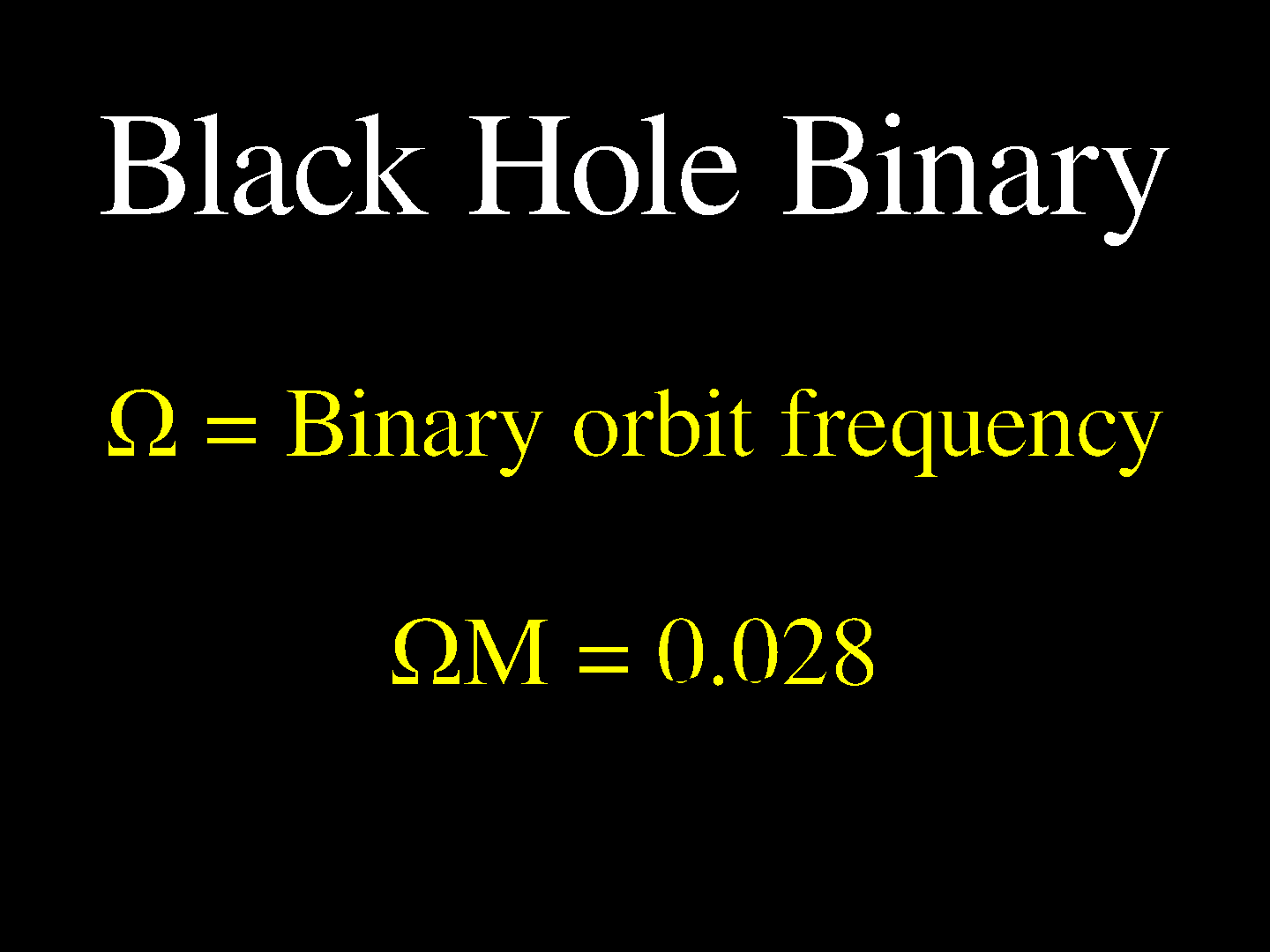 |
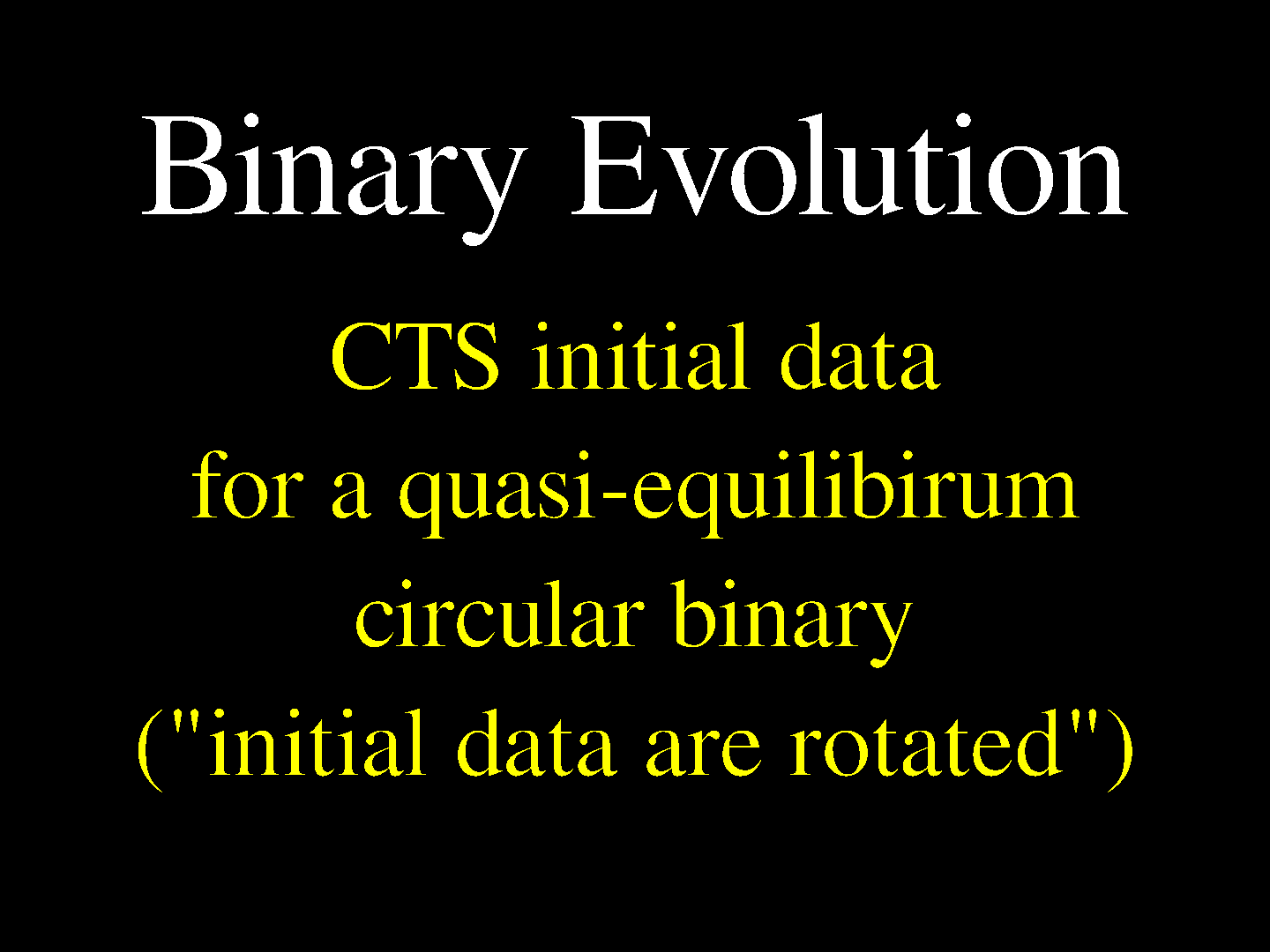 |
To model "rapid" radiative cooling we set the cooling time scale equal to 10% of the local, Keplerian time scale $\tau_{cool}(r)/M = 0.1P_{Kep}(r)/M=0.1 \cdot 2\pi(r/M)^{3/2}$, where r is the cylindrical radial coordinate measured from the center of mass of the binary.
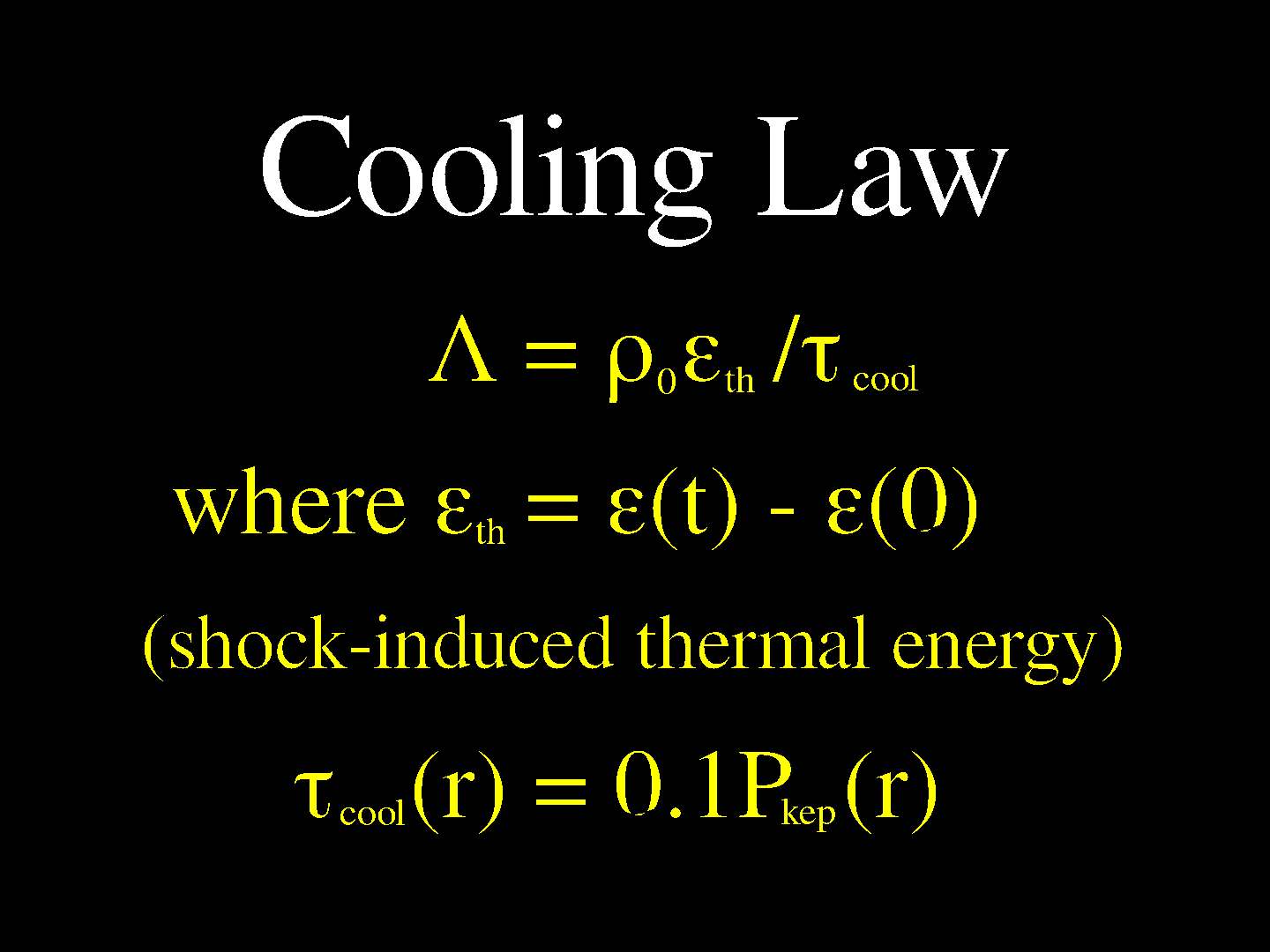 |